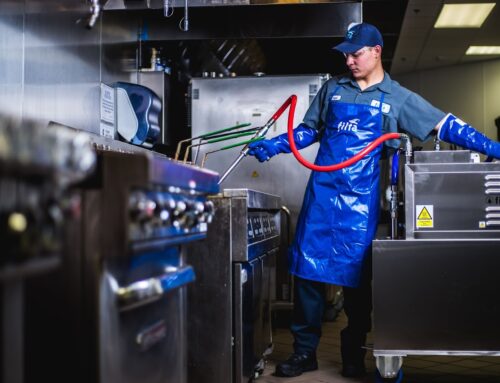‘Will of the People’: UNMC pharmacologist on medical cannabis safety, applications
November 5, 2025
LINCOLN, Neb. (KOLN) — Cannabis is a Schedule I drug, meaning the federal government doesn’t find it to be medically useful. That sentiment isn’t shared among 40 states where medical cannabis has been legalized.
Research shows cannabis has medical uses, and providers are learning how to better use the drug.
There are few people in Nebraska with expertise on the use of medical marijuana.
10/11 News made dozens of phone calls and found Dr. Ally Dering-Anderson.
Dering-Anderson, a pharmacy professor with UNMC’s Department of Pharmacy Practice and Science, is one of few people in the state of Nebraska educating students in the dosing of medical cannabis.
If you ask her if cannabis is safe to use, her answer is simple.
“There are no such things as safe drugs. Right? You asked a pharmacist,” Dering-Anderson said.
Dering-Anderson’s class on medical cannabis covers the history of marijuana, chemistry, toxicity, drug-to-drug and drug-to-disease interactions and FDA approval.
“Cannabinoid is the phrase that we use for the pieces of marijuana that have been identified as potentially medically useful. And that means most will cross the blood-brain barrier,” the doctor said. “If you inhale it or swallow it, it will get to your brain.”
Some of those cannabinoids stimulate, like THC, while others act as sedatives, like CBD or cannabinol.
There are over 120 known cannabinoids, and they interact in many combinations alongside 17 known terpenes to provide the effects of cannabis use. This is known as the “entourage effect.”
“Let’s look at PTSD. Perhaps it is the cannabidiol and that group of cannabinoids that make you tired and help you sleep through the night. But it may also be some of the tetrahydrocannabinols that are alerting,” Dering-Anderson explained. “If you gave one but not the other, the patient would either be super tired or be super stimulated, and those extremes are not helpful.”
Because there are so many combinations, there are several applications — and side effects — for cannabis.
According to the doctor, cannabis has been used medicinally for thousands of years, often consumed to help with pain and to progress labor.
Nowadays, it’s most commonly used to treat pain, anxiety, insomnia, nausea, wasting disorders and more dangerous cases of epilepsy. If you use the drug to treat those problems, any other effects that don’t help are considered side effects.
There are several ways to ingest the drug to help manage a variety of symptoms.
Children suffering seizures generally take it as a tincture while others may choose to inhale it or consume it as an edible.
By inhaling it, the effects come on quickly and only last a short time. The effects last much longer if you consume it, but they take about an hour to kick in.
Dering-Anderson says consuming the drug is safe, but smoking has some cause for concern.
“Lighting it on fire could lead to some lung disorder,” she said. “But, interestingly, there is no link, right now, to lung cancer. That doesn’t mean it’s a good idea, right?”
Despite that, the DEA says cannabis use alone has never resulted in someone’s overdose death. But combining the drug with other substances or risky behaviors can have deadly outcomes. The higher the use, the higher the risk.
Cannabis isn’t recommended for pregnant women or people suffering from schizophrenia and severe depression. The drug can also be misused, resulting in “cannabis use disorder.”
We are still learning more about cannabis as researchers have discovered more about the benefits and drawbacks of the drug. But the stigma around marijuana and its prohibition has been a roadblock.
“To say that, ‘Well, it’s illegal, and there’s clearly no medical use’ it’s really short-sighted. Of course there’s a medical use. Look around the country, look around the world. People are using this safely and medically,” Dering-Anderson said.
Nebraska Attorney General Mike Hilgers says one of the reasons he’s distrustful of the drug is because it isn’t FDA regulated.
Although cannabis by itself isn’t, several cannabinoids have been regulated by the FDA, namely to treat seizures and wasting disorders. Epidolex is one of those drugs.
To get a drug approved by the FDA, manufacturers need to provide data showing their drug is safe and effective.
Dering-Anderson says the prohibition of marijuana isn’t stopping regulation. Instead, the widespread legalization across the United States has hurt the profit incentive for drug manufacturers to push for it.
She also questions the idea that drug manufacturers have an incentive to keep medical cannabis off the market, saying the best customers are the ones who survive their diseases.
Click here to subscribe to our 10/11 NOW daily digest and breaking news alerts delivered straight to your email inbox.
Copyright 2025 KOLN. All rights reserved.
Search
RECENT PRESS RELEASES
Related Post


